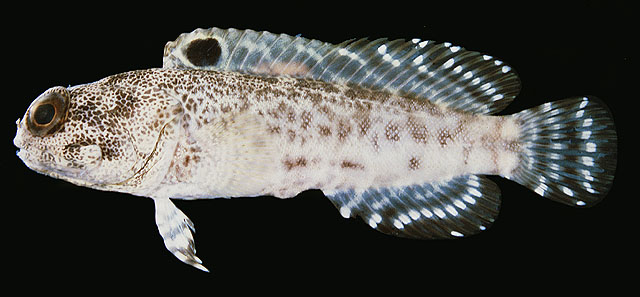| Opistognathidae (Jawfishes) |
| 50 cm TL (male/unsexed) |
|
reef-associated; marine; depth range 1 - 4 m |
| Indo-West Pacific: northern Australia. |
|
Dorsal spines (total): 10-11; Dorsal soft rays (total): 17-18; Anal spines: 2-2; Anal soft rays: 14-15; Vertebrae: 30-32. This species is distinguished by the following characters: with a rigid upper jaw lacking flexible lamina posteriorly, in adults extending about 0.7-1.2 eye diameters behind posterior margin of orbit; infraorbitals are relatively slender and tubular, the third infraorbital with small sensory canal opening and slender suborbital shelf; D X-XI,17-18, rarely X,18; vertebrae typically 12 + 18 or 19; body with two separate lateral lines, with the ventral one irregularly developed along lower side in region of anal-fin origin, often with one or more branches on belly; head covered with close-set, tiny, brown spots; pelvic and caudal fins usually strongly barred; anterior naris palmate (Ref. 128653). |
| Found in shallow reefs, in sand or rubble areas. Mouthbrooders (Ref. 240). |
|
Least Concern (LC); Date assessed: 29 November 2023 Ref. (130435)
|
| harmless |
Source and more info: www.fishbase.org. For personal, classroom, and other internal use only. Not for publication.
